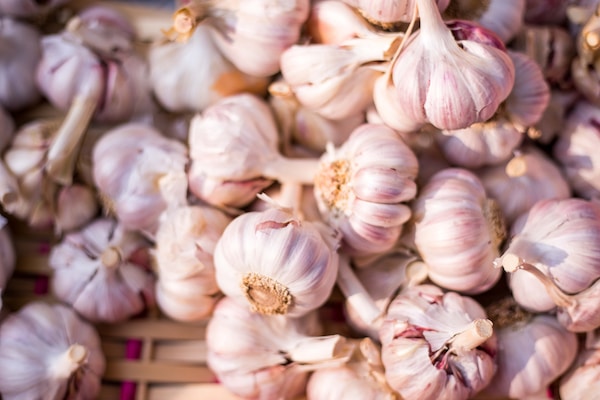
The Ultimate Garlic Guide: Everything You Need to Know
- 6 minutes reading time
Garlic is a beloved ingredient in countless cuisines around the world. Its unique flavor and aroma can enhance the taste of any dish, from soups and stews to pasta and stir-fries. Whether you're an experienced home cook or just starting your culinary journey, this ultimate garlic guide is here to help you unlock the full potential of this amazing ingredient.
Why Garlic Matters
Garlic is not only delicious but also packed with health benefits. It has been used for centuries for its medicinal properties, including its ability to boost the immune system, lower blood pressure, and reduce the risk of heart disease. Beyond its health benefits, garlic adds depth and complexity to dishes, making them more satisfying and memorable.
Selecting the Best Garlic
When it comes to buying garlic, fresher is always better. Look for bulbs that are firm, plump, and free from any signs of mold or soft spots. The outer skin should be papery and dry, with no green sprouts emerging. Avoid pre-peeled garlic as it may have lost some of its freshness.
Types of Garlic
There are several different varieties of garlic, each with its own unique flavor profile. The most common types of garlic include:
Softneck Garlic
Softneck garlic is the most widely available variety, known for its mild flavor and long shelf life. It's commonly used in Mediterranean and Asian cuisines.
Hardneck Garlic
Hardneck garlic has a bolder and more complex flavor compared to softneck garlic. It is often preferred by chefs for its intense aroma and versatility in cooking.
Elephant Garlic
Despite its name, elephant garlic is not actually a true garlic but rather a type of leek. It has a milder flavor and larger cloves, making it easier to peel and handle.
Black Garlic
Black garlic is a unique variety that undergoes a fermentation process, resulting in a sweet and savory taste. It has a soft and sticky texture and is prized for its umami-rich flavor.
Storing Garlic
To maximize the shelf life of your garlic, it's important to store it properly. Keep whole bulbs in a cool, dry, and well-ventilated place, away from direct sunlight. Do not store garlic in the refrigerator, as the cold and moisture can cause it to sprout or become moldy. Once you've peeled or chopped garlic, store it in an airtight container in the refrigerator for up to a week.
Preparing Garlic
Before using garlic in your recipes, it's necessary to prepare it by peeling and mincing. Here's a simple step-by-step guide to help you:
- Separate the cloves from the bulb.
- Place a clove on a cutting board and firmly press it with the side of a knife or the heel of your hand to loosen the skin.
- Peel off the skin and discard it.
- To mince garlic, finely chop the peeled clove until it reaches your desired consistency.
Cooking with Garlic
Garlic can be used in a variety of ways in cooking, depending on the desired flavor profile. Here are some popular cooking techniques for garlic:
Sautéing
Sautéing garlic in oil or butter helps release its flavor and aroma. Heat the oil or butter in a pan over medium-high heat, add minced garlic, and cook until fragrant and lightly golden.
Roasting
Roasting whole garlic bulbs brings out a sweeter and milder flavor. Cut off the top of the bulb to expose the cloves, drizzle with olive oil, wrap in foil, and roast in the oven until soft and caramelized.
Infusing
Infusing garlic into oil, vinegar, or broth adds a subtle garlic flavor to your dishes. Heat the desired liquid in a saucepan, add whole cloves of garlic, simmer for a few minutes, then remove the garlic.
Pickling
Pickling garlic cloves creates a tangy and flavorful condiment that can be used in salads, sandwiches, or as a topping for meats and cheeses. Combine peeled cloves with vinegar, water, salt, and desired spices, bring to a boil, then let cool and refrigerate.
Garlic Replacements and Substitutes
If you're out of garlic or simply don't enjoy its taste, there are a few alternatives you can use in your recipes:
- Garlic Powder: Garlic powder is made from dehydrated garlic cloves and can be used as a substitute in many dishes. Use it sparingly, as it can have a more concentrated flavor than fresh garlic.
- Onion: Onion belongs to the same family as garlic and can add a similar depth of flavor to dishes. Use it in larger quantities to achieve a comparable taste.
- Shallots: Shallots have a milder and sweeter flavor than garlic but can still provide that aromatic kick. Finely chop or mince shallots to use them as a garlic substitute.
Conclusion
From its health benefits to its incredible versatility in the kitchen, garlic is truly an essential ingredient for any home cook. By following the tips and techniques shared in this ultimate garlic guide, you'll be able to fully appreciate the wonders of garlic and elevate your cooking to new heights. So, get ready to embrace the fragrant and flavorful world of garlic and let your taste buds rejoice!
Remember, when in doubt, just add more garlic!
All your recipes in one app.
Organize all your recipes now with the best recipe management app. What are you waiting for?

